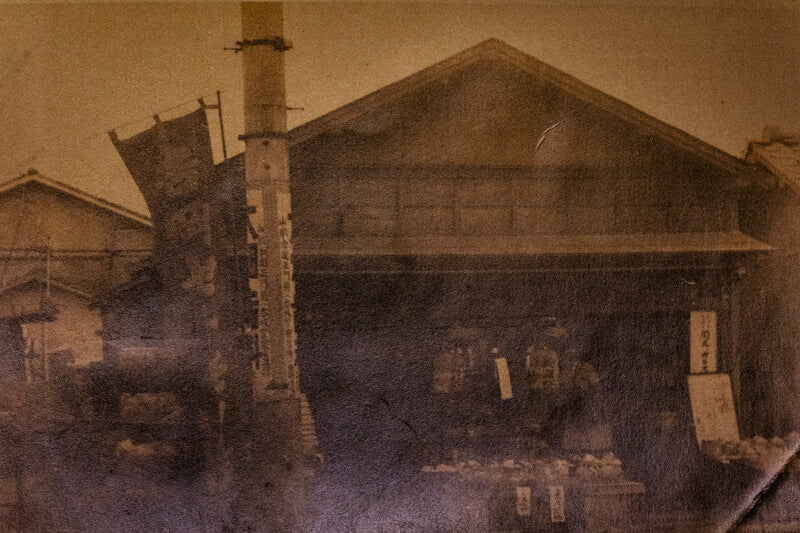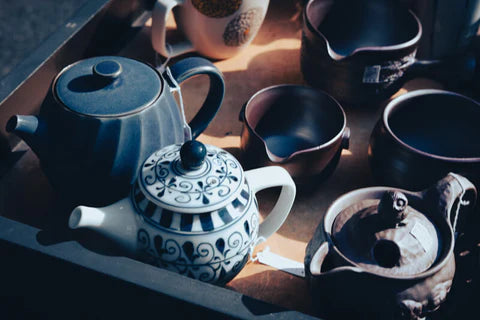
In the bustling neighborhood of Akasaka, Tokodo stands as a sanctuary of artisanal excellence, a vibrant intersection between tradition and innovation. Renowned for its diverse array of Japanese ceramics, this ceramics emporium houses everything from the vibrant Kutani-yaki to the elegant Kiyomizu-yaki, offering a glimpse into a world where passion for local craft converges with the intricacies of global branding. As we explore Tokodo's philosophy through the insights of Soichiro Yoshioka, Tokodo’s visionary business representative, we aim to uncover the essence of what makes this Tokyo-based emporium pivotal in the ever-evolving tapestry of Japan's traditional crafts industry. Join us on an exploration of a cultural hub where local craftsmanship and an international audience unite in their appreciation of Japan’s rich ceramic heritage.

Pottery and Regional Branding: Craft from a Cosmopolitan Perspective
In crafting a meaningful customer experience with Tokodo’s products, the very first thing Mr. Yoshioka emphasizes is the importance of physical interaction with the products. “You must have them hold it,” he states firmly. “Only then can you feel the warmth of the handmade product, because you’ll immediately be able to tell whether it fits well in your hand.” This golden rule applies to all ceramics across Japan, regardless of the style it hails from — be it Kiyomizu-yaki, Arita-yaki, Kutani-yaki, or any of the other regional specialities. Given the immense range of styles and techniques Japanese ceramics are crafted in, Mr. Yoshioka believes it's impressive enough for the layman to be able to name a favorite.
This is especially considering what he believes to be the lack of strong regional branding for Japanese artisanal tableware. “As a person in the industry, I am a little troubled by this. In other countries, you see the names of companies like Royal Copenhagen or Wedgwood,” he said. However, Japanese craftsmanship is almost entirely categorized by regionality. “When it comes to branding, I think that the name of the production area, such as Arita-yaki, needs to be strengthened,” he stated. For example, while both Kiyomizu-yaki and Kyo-yaki are ceramic styles originating from Kyoto, the labels for Kiyomizu-yaki are written in traditional kanji with no hiragana or Roman characters, resulting in most customers struggling to read its name correctly. “Ninety percent of people cannot read it. No kidding, everyone reads "Shimizu-yaki” (due to the homophone pronunciations of kanji). Even older people and people who like pottery can't read it. I think the people who produce Kiyomizu-yaki in Kyoto need to make the branding a little clearer, and the government needs to put more effort into this.”
As Mr Yoshioka explained, this is not merely an issue of regional pride — a lack of clear branding has drastic impacts on a craft’s continued survival. In the case of Kyoto’s pottery, he believes poor branding has led to it garnering less popularity compared to crafts such as Nishijin textiles, and as a result its craftsmen struggle to secure funding for supplies. As the pottery originating from a specific road leading to Kyoto’s Kiyomizu Temple, Kiyomizu-yaki is one such casualty. “The term ‘Kiyomizuyaki’ could be written in hiragana, but they don't do that,” Mr Yoshioka lamented. “Because of this, I don't think that the name of Kiyomizuyaki has become well-known.”
To combat this issue, he tries to highlight the unique locality of his products to customers, especially tourists from abroad. “If a Japanese person says something like ‘Kyo-yaki’ or ‘Arita-yaki,’ they will just say, ‘Hmmm…’. So when we first talk to visitors, we usually tell them that we are from Kyoto, and they usually say, ‘Oh, I was there yesterday,’ or ‘I'm going there now.’ That gets us discussing the local area.” he explained. A deeper understanding of its region’s culture, he believes, makes the backstory behind each piece a little more exciting. “When they start asking about how to use our products, I tell them, ‘This is a teacup for tea, but you can also use it to drink coffee or put nuts in it.’ It opens up the world a bit, doesn't it?”

Curating Products: Changing Seasons and Regions
When asked if he has a personal favorite among his collection, Mr. Yoshioka introduced Kyomi to his private line of Bizen-yaki. Originating from Okayama prefecture in the Jomon period, Bizen-yaki is emblematic for its simple, rustic style, one that has become synonymous with the wabi-sabi philosophy. “I have a Bizen ware at home that is between a demitasse cup and a mug,” he said. “I like to drink hot coffee, but I think demitasse cups are a little too small. So when I went to an exhibition and found some Bizen-yaki that were just right, I quickly stocked up on them.”
With Japan’s many seasonal celebrations and festivals, it’s also crucial that Tokodo evolves with the aesthetics of the moment. While Tokyo’s departmentment stores change their shopfronts about a month and a half ahead of a change in season, Tokodo changes their product range about half a month or a week in advance. In the summer, for example, white backgrounds and glass are used to maintain a cool, refreshing theme. However, as an artisanal emporium, Mr. Yoshioka places greater emphasis on balancing cultural representation from a diverse range of Japanese regions to maintain store variety. When asked how he decides this, he explained that “it's just a feeling”. “ I might look at the lineup and find that the range is becoming increasingly narrower. If I find that there is an increase in the number of Kyoto ceramics on display, for example, I balance it by adding Arita porcelain or ceramics from other regions,” he explained. “If we purchase the products from only one trading company, we’d end up with the same kind of products, which would make the shop feel unbalanced.” Harmony, and a careful selection of regional representation, is thus central to Tokodo’s philosophy.
As we conclude our exploration of Tokodo, we are left with a deep appreciation for its fusion of tradition and modernity. With his thoughtful curation and deep respect for regional craft, Mr. Yoshioka's commitment to showcasing a diverse range of Japanese art styles illuminates the complex challenges of sustaining artisanal craft in today's world. In the delicate balance between preserving age-old techniques and embracing modern branding strategies, Tokodo testifies to the ever resilient, ever evolving spirit of the Japanese craft industry. Leaving Tokodo, we take with us a richer understanding of the cultural and business intricacies that shape this captivating cultural landscape.



